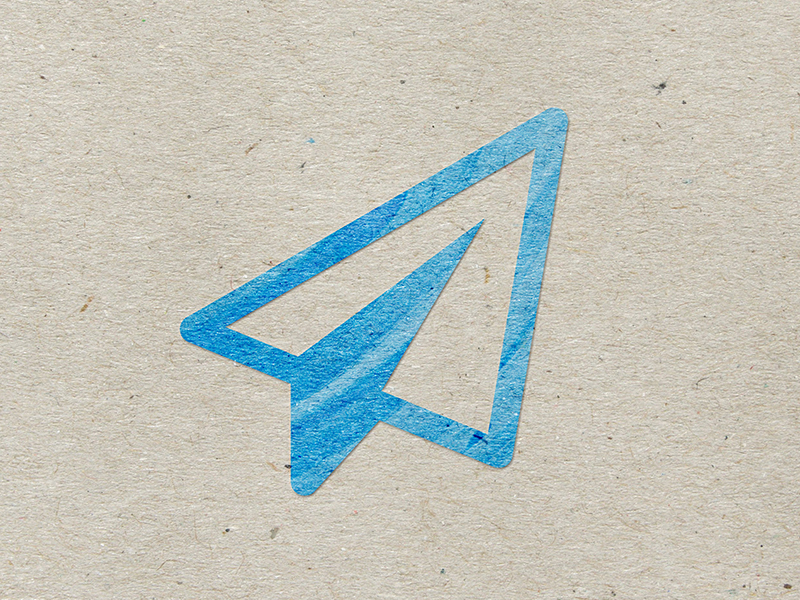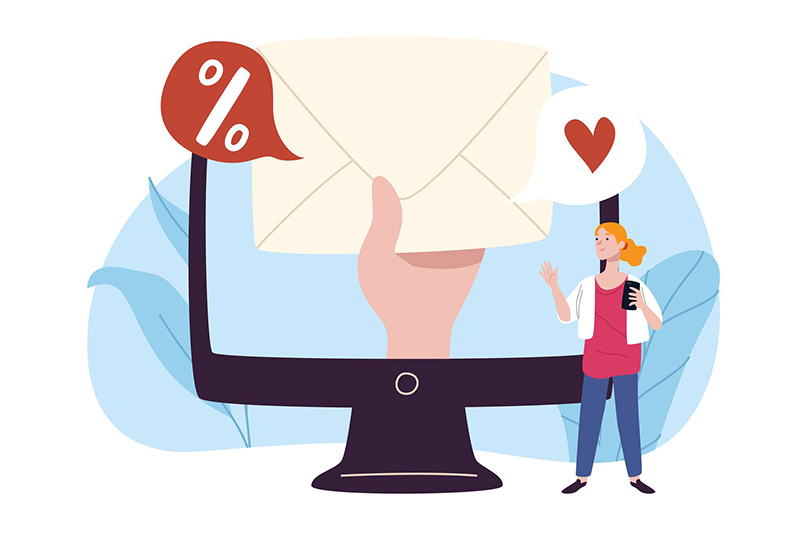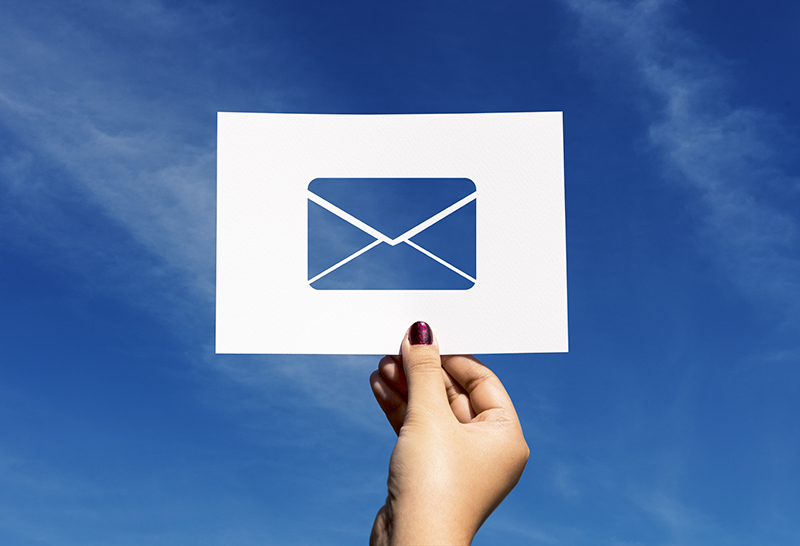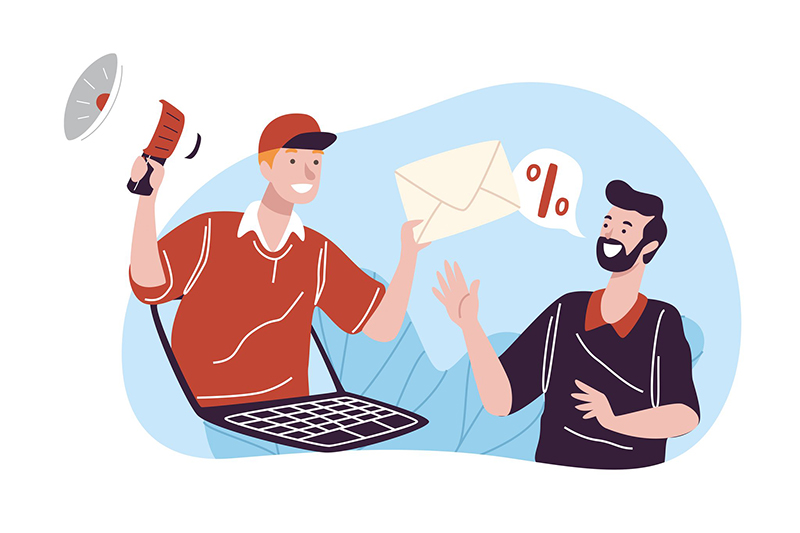We often hear the question: “Is email marketing still relevant?” And our response is always a resounding “YES!”
In fact, with the increasing emphasis on user privacy in today’s market, email is becoming an extremely important asset for digital marketing campaigns. And it’s one of the most cost-effective marketing assets, too.
Unlike cookie-driven marketing, your users have to opt into your email marketing campaigns in one way or another, and they always have the option of opting out as well. Email marketing is still a tried and tested way to reach your audience without invading their privacy.
But it’s not just privacy that keeps email marketing at the top of the list of effective marketing strategies. Email, when planned and executed properly, is one of the best methods of promoting brand awareness, keeping clients engaged, re-engaging clients with your website and platforms, and keeping your audience informed through newsletters.
It is a direct connection with your audience, straight to their inbox.
So, now that we have the issue of email marketing relevance settled, let’s dive into email design a little…
Types of Email Design
There are a number of different ways to approach your email design, depending on the campaign, the audience that you’re trying to reach, and the purpose of the email. You would not want to send a plain text email to promote a product, but you may not need a fully designed email to send out a company newsletter. Let’s look at some of our options.
Text-Only Emails
Text-only emails are the most simple type of email to create. These emails require no special skills to create. This is typically the equivalent of sending an email directly from your inbox, though you might choose to use a simple template to offer some visible structure and aesthetic.
Text emails feel more personal, and might be a good option for:
- Company newsletters
- PR announcements
- Meeting confirmations
- Simple internal communications
These emails are the easiest way to communicate simple information quickly, without making a project out of it. However, they are not the best option for promoting a product or trying to drive your traffic in a certain direction. These emails typically have no “wow” factor and depend solely on the content of the text to drive the point home.
Custom CSS & HTML Email Design
Rich HMTL emails are what we typically think of when we consider email marketing. These emails can utilize all of the design tools we love using to create engaging web pages, which offer us an obvious advantage when it comes to making an impression and driving traffic.
These emails are great for all types of campaigns, including:
- Product and Service promotion
- Transactional Campaigns
- Brand Awareness
- Customer Journey and Engagement Campaigns
- Sales and Specials
- Customer Newsletters
- Customer Retention
- Rapport Building
There are many obvious advantages and opportunities when it comes to Rich HTML email campaigns. But there are a few pitfalls as well.
The primary disadvantage of custom email campaigns is that they are rendered through many different email clients – some of your customers have Outlook accounts, and others receive your campaign through Gmail, for example.
Because of this, it’s often difficult to get an email to display in exactly the same way through all email clients. This is especially evident when it comes to rendering in different screen sizes as well.
It requires some coding know-how and possibly a special tool to review emails through different clients and to correct possible display issues so that your email displays as consistently as possible across all modern platforms and screen sizes. There are a lot of them!
There are some tools that can help to ease email design for laymen, which offer templates and drag-and-drop features that are already built to work with different clients.
This brings us to…
Ready-Made Email Templates
Many services, such as MailChimp and Canva, offer ready-made templates that are designed to work effectively across all platforms and devices. These services provide a way to create your emails without having to worry too much about how they will look on the user end.
Email templates can be a budget-friendly way to create a professional email with graphics, interactivity, and calls to action. These services use drag-and-drop tools that will allow you to place information quickly and easily with no coding knowledge at all.
The only disadvantage to email templates is that they can tend to look a little bland. With some design know-how, you can whip up a beautiful header in photoshop that will help to greatly improve the look and feel of your template. With only so many templates available through any given service, however, you might not be able to acquire that unique edge that you’re looking for. These are great tools for getting your marketing out and cutting costs, nonetheless!
JavaScript Based Interactive Emails
JavaScript-based interactivity can add a whole new level of engagement to your email campaigns. This type of interactive email is trending upward increasingly fast and allows us to incorporate animated features and interactive elements that we could never have imagined previously. These are obvious advantages to this type of email design.
What’s the downside? Well, there are a couple to consider. These emails require the support of an experienced developer, which can become quite expensive. Additionally, this type of email is not yet fully supported by all email clients, which will require you to create a fallback version of the email for those clients. The ROI could be worth it if your resources will allow you to pursue this avenue for your email design.
Email Design Features
Email is made up of several different components, all equally important to creating a lasting impression and optimal user experience.
Copy
Well-researched and written marketing copy is obviously a key feature of any great marketing campaign. However, there are also several items to consider with your copy from an email design perspective.
Keep it short. Avoid creating a “wall of text.” This is especially important for smaller devices. Use images and headings at various levels to keep things short and digestible.
Mind your alignment. Keep your alignment consistent throughout the email. If you have centered the first paragraph in the body, do not left justify the last paragraph. Consistency is the key to readability. It’s also important to note that the left justification is more legible in most cases.
Structure
Carefully consider the structure of your email. Your email should be laid out according to some conventions… a header at the top, a body in the middle, and a footer at the bottom. However, there are a few other considerations when it comes to email structure.
Stick with a 600px wide layout. On a desktop display, the widest format for your email should be 600px. This is the most compatible size across all email clients and will help to get you a step ahead in display consistency for your campaign.
Divide your content logically. Shorter emails will consist of a header, a short body, and a footer. However, some newsletters and announcements tend to get a little more lengthy. Make sure you are creating a visual separation between different topics and sections to improve readability and to help readers easily find the information that they are interested in.
Keep it clean! Allow plenty of white space around and between elements to allow visual “breathing room.” Use divided sections or cards to present information in an organized and attractive way.
“A place for everything and everything in its place.” Use the appropriate areas of your email for their intended and conventional purposes. This will help to avoid confusion for your readers. Promote your brand in the header area, and use the footer for social media and contact information.
Links and CTA
Links are one of the most ignored elements of an email campaign. Every element of your campaign contributes to the experience and engagement, and there are a couple of things to consider when it comes to links.
Style your links. You don’t have to spend a lot of time on this. But, your links should fall in line with the color scheme of your design. Ensure that the link looks great both before and after it is clicked.
Use Buttons for your CTA. Text links are okay if you want to link users to a reference on or off of your site. But, if you’re trying to direct traffic to a specific funnel on your website, or get them to call your office or check out your sale items, create a button to attract attention!
Your email may only contain one or two buttons, but placement, style, and interactivity should all be considered important elements of your design and email experience.
Images
Images are an important element of any Rich HTML email. Images can be used to guide the user’s eye through your content, establish a hierarchy between important elements, break up long content, and elicit emotion and engagement. Consider your images carefully – they represent your content and your brand.
Video
Videos do not play back properly in most email clients. In many cases, an email that includes an embedded video will be sent by the email host directly to the user’s junk mail folder. If you want to include a video in your email, there are a couple of options.
If you want to include some animated scenes from your video, animated .gifs are a great option. Although you cannot include video sound, and it’s a good idea to keep them short, these can act as a great way to attract attention to a video that you would then link off to on a web page.
You can also consider a simple image with a “Play” button graphic overlay to inform the user that it will lead to a video. Then link off to the video on a webpage for playback. This will help to ensure the best results from your email while allowing you to promote your video in a way that doesn’t have a negative impact on your campaign.
Animated GIFS
As mentioned above, animated .gifs can be helpful to display animation from a video without actually embedding the video in the email. But, they’re also great for driving engagement in your email in general. An email with animated content is much more effective and likely to get users involved in the experience. Animated .gifs can be used as aesthetic elements, or as a CTA, and really help to bring an email to life!
SharedTEAMS – Your New Email Design Team
There are a lot of different things to consider when you’re diving headfirst into an email design. Though email design is very similar to web page design, there are other aspects to consider and it can be its own beast to tackle!
But rest assured that email marketing is not dead. With a well-planned strategy and a little attention to the different aspects of your email design, your campaigns are sure to engage and convert! Get in touch with our marketing experts at SharedTEAMS to build a strong foundation for your next email campaign.







